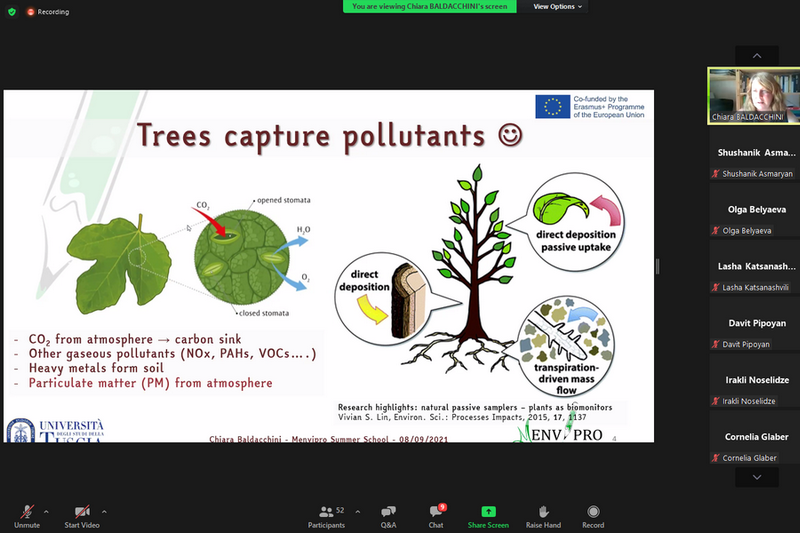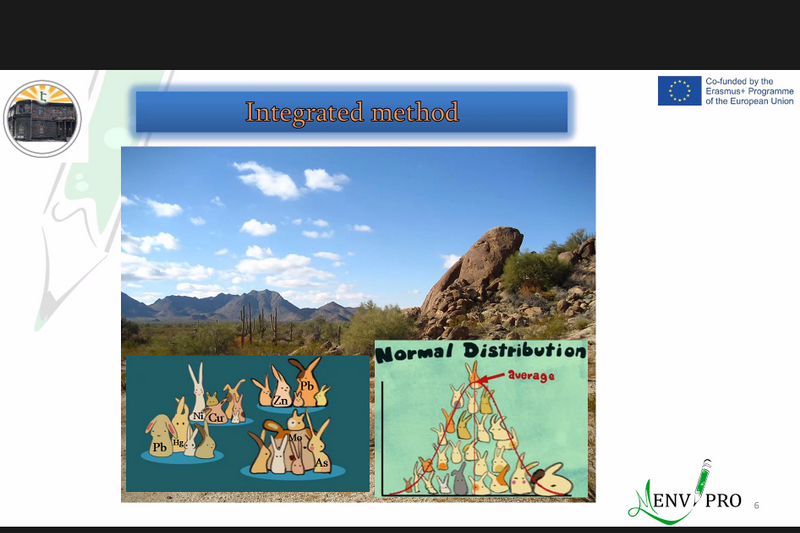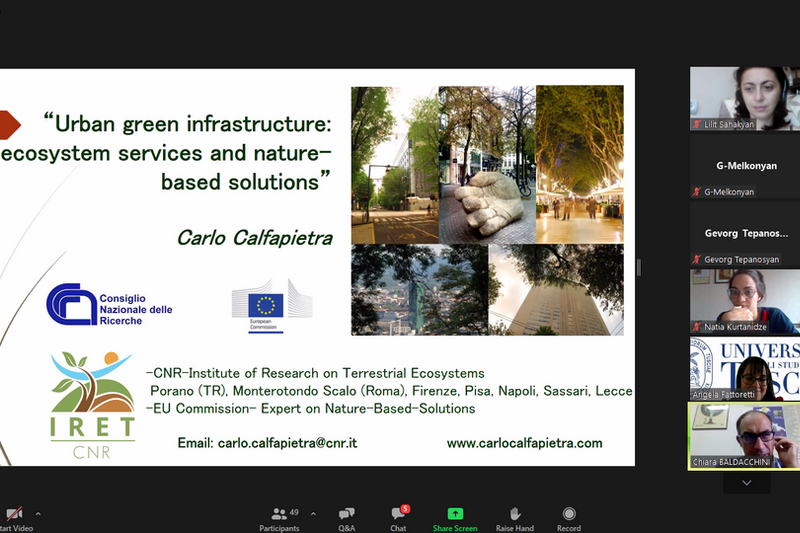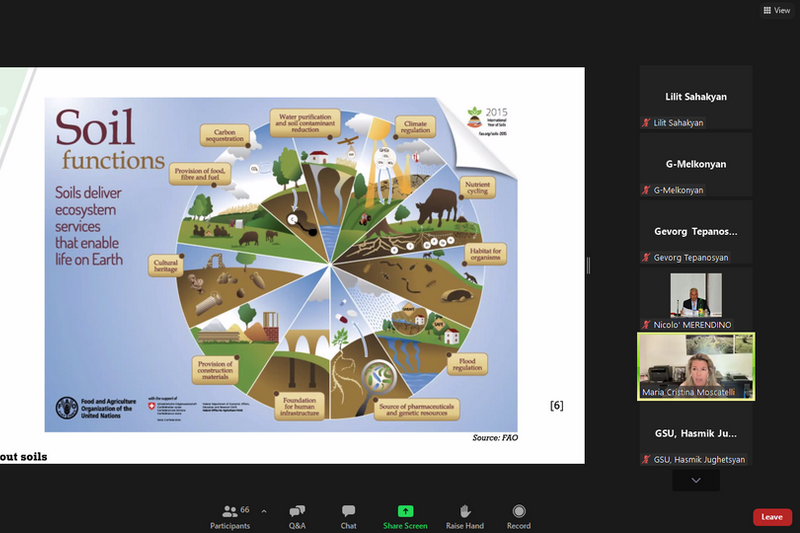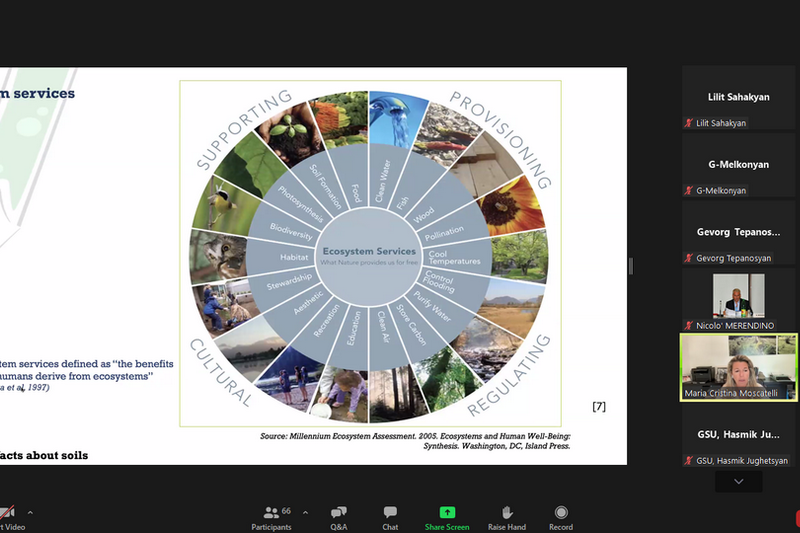MENVIPRO SUMMER SCHOOL CONTINUES IN FULL SWING
September 9, 2021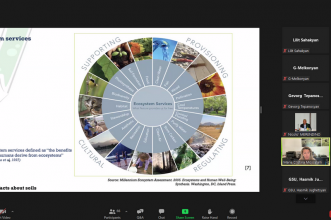
It is already the third day since MENVIPRO summer school continues operation in full swing full of professional discussions and exchange of information. The speakers of the third day were as follows: Dr Lilit Sahakyan and Dr. Gevorg Tepanosyan who covered Environmental Geochemistry, Prof. Maria Moscatelli (UNITUS) speaking on soil quality monitoring and Dr. Chiara Baldacchini (UNITUS) speaking on urban trees and particulate matters and Dr. Carlo Calfapietra from CNR on nature-based solutions (NBS) implementation in urban environments.
The aim of Environmental Geochemistry course was to acquaint students with the basic features of geochemical processes, phenomena, the main features of geochemical research methods, to provide the necessary theoretical-practical knowledge and skills for the assessment of the types, scales, levels, hazards, risk and pollution pathways of the various environmental media. It will also enable them to become familiar with measures to reduce the level of environmental pollution. The methodological bases, approaches, study objects and subject, scientific goal and problems of "Environmental Geochemistry" were covered as a branch of science.
Maria Cristina Moscatelli presented the soil as a living, dynamic, non-renewable, vulnerable resource introducing the concepts of soil quality, soil health and soil security. Soil quality needs to be monitored in order to prevent degradation conditions and loss of important functions. A selection of soil quality indicators were presented indicating advantages and disadvantages for their use.
Dr. Chiara Baldacchini spoke about Particulate matter (PM), one of the main atmospheric pollutants, especially in urban environments, where the majority of anthropogenic PM sources can be found. It is well known that plant leaves can interact with PM, accomplishing an important removal action of particles from the atmosphere. This occurs based on two main mechanisms: plant respiration (only for fine PM, smaller than 1 micron) and surface deposition (for larger particles). Different methods have been developed to quantify the amount of PM removed by trees, with the final aim of better understanding this phenomenon and help stakeholders and planners in suitably using trees for air quality mitigation. In this lecture, the pros and cons of different methods were presented and discussed.
The last presentation made by Dr. Carlo Calfapietra covered nature-based solutions (NBS) implementation in urban environments increasing year by year, also thanks to the attention and the boost given to them by the European Commission political choices. NBS can help in overcoming several challenges, ranging from environmental related ones to those connected with social cohesion, human health and well-being, or economic and labour market. In the environmental and ecological context, NBS may improve air quality, reduce climate hazards, or improve biodiversity. The quantification of NBS efficiency with respect to specific criticalities can be achieved by assessing the related indicators, which need to be scientifically valid but also easy to understand and to obtain, to improve stakeholder’s involvement.

